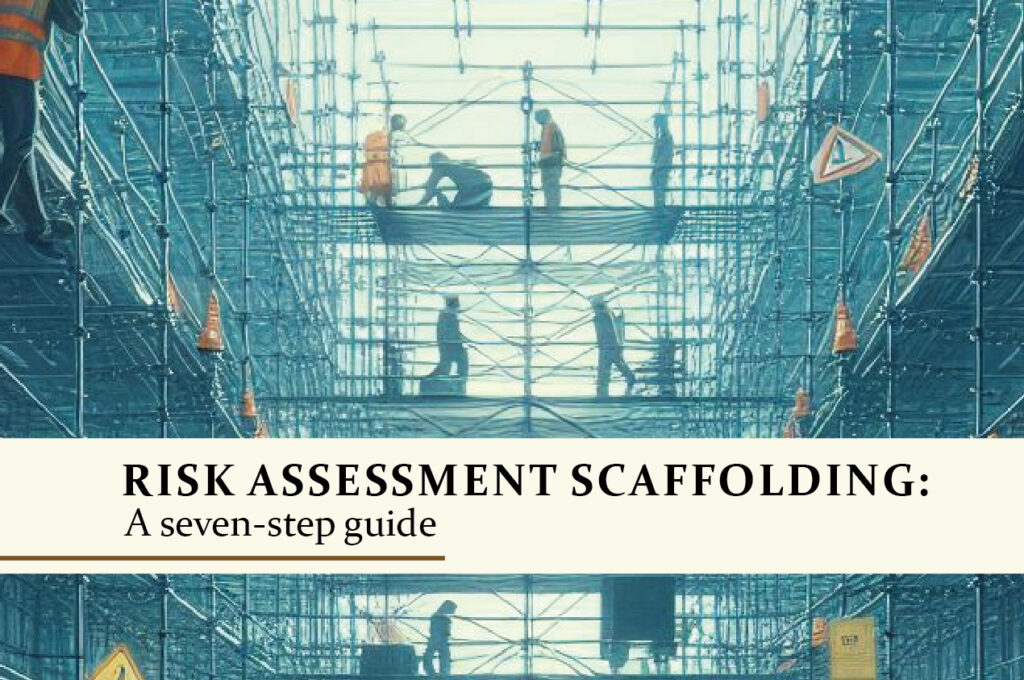
Scaffolding is an integral part of construction and maintenance work, providing crucial access and support for workers at heights. However, it also poses significant risks if not handled and erected properly. Conducting thorough risk assessment scaffolding is paramount to ensure the safety of workers and prevent accidents or mishaps.
Step 1: Identify Hazards
The first step in any risk assessment process is identifying potential hazards. In scaffolding, these can include unstable ground conditions, overhead power lines, adverse weather, and insufficient support for the scaffold structure. Through a comprehensive site survey, all potential risks must be recognized.
Step 2: Identify People at Risk
Determining who might be at risk is equally important. This involves not only the workers directly using the scaffolding but also individuals nearby who might be affected by any potential hazards. Understanding the scope of risk exposure helps in devising comprehensive safety measures.
Step 3: Evaluate and Control Risks
Once hazards and people at risk are identified, the next step is to evaluate and prioritize these risks based on their severity and likelihood. Controlling these risks involves implementing measures to mitigate or eliminate them entirely. This could involve using guardrails, ensuring proper installation, or limiting access to hazardous areas.
Step 4: Record Findings
Documenting the identified hazards and the measures taken to control them is crucial. This not only serves as a reference for future assessments but also helps in ensuring that all risks have been properly addressed and mitigated.
Step 5: Review and Update
Risk assessments scaffolding: should not be seen as static documents. Regular reviews and updates are essential, especially when changes occur on-site, new equipment is introduced, or if incidents or near-misses happen. Keeping the assessment up to date ensures that evolving risks are continually managed.
Step 6: Communicate and Train
Clear communication of identified risks and implemented control measures is vital. All personnel involved should be properly trained in the procedures and safety protocols related to scaffolding. Regular training sessions help in reinforcing safety standards.
Step 7: Monitor and Supervise
Continuous monitoring of the scaffolding environment and supervision of workers ensure that safety protocols are being followed. Regular checks on the integrity of the scaffold, adherence to safety guidelines, and immediate corrective action for any deviations are essential.
Benefits of Risk assessment scaffolding
Conducting a risk assessment in scaffolding offers numerous benefits that directly contribute to the safety, efficiency, and overall success of construction projects. Here’s a detailed explanation of the advantages:
- Enhanced Safety
- Identifying Hazards: The process involves a thorough examination of the site, pinpointing potential risks such as unstable ground, overhead obstacles, or structural weaknesses in the scaffolding.
- Prevention of Accidents: By recognizing these risks, preventive measures can be implemented, like adding guardrails, ensuring proper installation, or limiting access to hazardous areas, significantly reducing the likelihood of accidents or injuries.
- Legal Compliance
- Meeting Regulatory Standards: Risk assessments are often mandated by regulatory bodies. Complying with these requirements not only ensures worker safety but also avoids legal penalties and potential project delays.
- Cost Savings
- Preventing Downtime: Accidents or failures in scaffolding can cause significant project delays. By proactively identifying and mitigating risks, costly downtime due to accidents or structural failures can be minimized.
- Reduced Insurance Costs: A safer work environment resulting from thorough risk assessment may lead to lower insurance premiums, as it showcases a commitment to safety, reducing the likelihood of claims.
- Efficiency Improvement
- Streamlined Workflow: Implementing safety measures derived from risk assessments can improve the efficiency of workers by providing a safer and more organized workspace.
- Clear Protocols: When risks are identified and documented, clear protocols for safety procedures and emergency responses are established, streamlining operations and minimizing confusion.
- Worker Confidence and Morale
- Boosting Confidence: Employees feel more secure and confident in their workplace when they see that comprehensive measures are taken to address potential risks.
- Higher Morale: Enhanced safety measures foster a positive work environment, boosting morale and potentially increasing productivity.
- Continuous Improvement
- Regular Reviews: Risk assessments are not static documents. Regular reviews and updates ensure that evolving risks are identified and managed, fostering a culture of continuous improvement in safety standards.
- Project Reputation
- Positive Image: Commitment to safety through rigorous risk assessment enhances a company’s reputation. Clients and stakeholders perceive such dedication positively, potentially leading to more opportunities and stronger relationships.
Conclusion
Conducting a comprehensive risk assessment for scaffolding involves a systematic approach encompassing identification, evaluation, and control of potential hazards. By following a structured seven-step guide, construction sites can significantly enhance safety standards, protecting the well-being of workers and mitigating the risks associated with working at heights.











Comments are closed